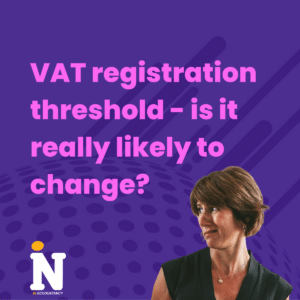Flat rate VAT for contractors and VAT accounting in general can seem like quite a confusing subject to many people, but as accountants in Hazel Grove, we can help! If you are a contractor who is set up as a limited company, then you may be able to apply for the flat rate VAT scheme which can help to reduce your administration tasks and reduce the VAT burden on your cash flow too.
Calculating VAT
The flat rate scheme for VAT was introduced by the Government in 2002 as a way of simplifying the paperwork that small businesses previously needed to deal with when calculating VAT. What it means for small business who earn less than £150,000 (excluding VAT) in any given year, is that they can still charge VAT at 20%, but when they are reconciling their VAT for HMRC, they just pay a percentage of their turnover rather than having to calculate the VAT on all purchases.
Simplify VAT reporting
The main advantage of signing up to the flat rate VAT scheme (if you are eligible) is that it really does simplify VAT reporting for you. If you have been contracting for a while and are used to struggling with your VAT returns every quarter, you will be delighted to discover the small amount of paperwork involved in processing a flat rate VAT return. However, it is important that you remember to put aside the 20% that you charge your client or agency, so that you have the cash available to pay HMRC when need be.
Here’s an example
Now let’s look at an example to give more clarity. Let us say that you are a translator who earns £30,000 plus VAT from their client during the VAT quarter. VAT at 20% on this level of earning would be £6,000 so turnover plus VAT for this business would be £36,000. Using the flat rate scheme would mean that the translator has to pay HMRC 12% of their total income including VAT, and this works out as 12% of £36,00 which is £4,320 (12% is the HMRC rate for translators, other types of contractors will have different rates).
So, the translator will then pay HMRC £4,320 at the end of the month following the quarter end that is stated on their VAT return, which will leave them with £1680. For most contractors who have reasonable expenses to pay, this should more than adequately compensate them for the VAT they are paying out in company purchases. Hopefully, this example shows you that the simplicity of the calculation involved in flat rate VAT accounting means it is well worth signing up for – the HMRC even provide you with an online VAT flat rate calculator to help.
Discount on VAT
Another benefit of adopting the flat rate scheme for your business is that you receive a 1% reduction for the first year of your VAT registration. This discount also still applies if HMRC make any changes to the rate during this time as well. However, it is not all plain sailing, as the flat rate VAT scheme will not benefit all contractors. For example, it could actually work against those contractors who undertake a large number of VAT transactions, as the flat rate means the returns they can expect are limited.
For more information about the flat rate VAT scheme check out our guide and how we can help you with it, please give us a call on 0161 456 9666. We also have a handy Tax App that is free to download for both Android and iPhones at: https://www.in-accountancy.co.uk/taxapp-page/






